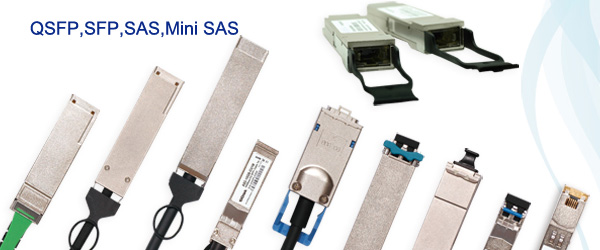All About 100G Transceivers and Uses in Data Centers

As networking continues to evolve, it has become apparent that data centers are going to do all of the heavy lifting, regardless of who the network serves. In fact, that’s already the case. Networking hubs handle virtually all digital traffic before requests eventually filter down to individual users. Because of this, data center networking is only going to demand more from its hardware and design. Meeting the needs today and tomorrow will require 100G transceivers. This guide was designed to help you better understand and navigate the world of these transceivers.
What Are 100G Transceivers?
As the name suggests, 100G transceivers are devices that operate fiber optic transmissions at data rates up to 100 Gbps. They come in a range of designs and applications, and as of the start of 2019, 100G transceivers were handling more than half of all optical data center transmissions. Note the lack of qualifiers on that statement. If it runs on fiber optics in a data center, it probably touches a 100G transceiver.100G transceivers have seen massive upgrades and adaptations over the last three years. Utilizing an array of connection types and design philosophies, they can provide those 100G rates at distances up to 40 km. Depending on the transceiver, you can get up to 24 fiber lanes. Data rates per lane usually start at 10 Gbps and can get up to 28 Gbps. To put it as simply as possible, 100G transceivers are the hubs for some of the fastest digital communications that are currently available.
Where Are They Best Used?
Considering the variety of transceiver designs, there are plenty of places to integrate them into a network. The common theme is pretty obvious. 100G transceivers are irreplaceable in dense data networks. As you already read, they’re already being utilized in the bulk of data centers, and the amount of traffic they handle in each center continues to grow.In a less generic sense, 100G transceivers are ideal for networks that simultaneously handle large numbers of channels. The scalability of the transceivers enables them to connect more nodes per transceiver than any alternative. They shine at their absolute brightest in the most cable-dense environments.
How Do Different 100G Transceivers Compare?
Any network that requires this equipment won’t tolerate a substitute. When looking at 100G networking, the real question is which transceiver should be used. That’s easier to answer when you breakdown and compare the four most common model types.CXP
CXP transceivers are great for short-range 100G applications. They come in 12 or 10-line designs, and they support up to 12 Gbps per line. They are hot swappable and are designed for a small form factor which makes them a popular choice in high-density networks.
QSFP28
High-density networks are a common theme among 100G transceivers. QSFP28 also has a small form factor for this purpose, but it operates on lower power consumption than other popular 100G designs. This is achieved by limiting the communication to 4 lines per cable and ratcheting the data rate per line up to 25 Gbps. In some cases, that speed can be boosted up to 28 Gbps, making QSFP28 the fastest data-per-line 100G design.
CFP
CFP is one of the older 100G formats, but it has been regularly updated to keep up with newer technology. You can often find three varieties of CFP — CFP, CFP2 and CFP4 — in modern data centers. Across these variants, CFP data rates range from 40 Gbps to 100 Gbps per transceiver. They support single and multi-mode fiber, and they utilize 10 X 10G and 4 X 25G lines. The form factors are each a different size, so CFP offers the most choice in cost vs scalability. CFP is particularly good for networks with dramatically different needs inside of the same data center as they are cross-compatible, and each interface is optimized for different demands.
CPAK
The last big player in 100G transceivers is CPAK. This is the transceiver designed by Cisco, and it is intended to be a bridge between the different formats and protocols in the world of fiber optics. It’s as universal as you can get, providing rates from 40G to 100G, and CPAK transceivers connect via SC, LC and MPO. CPAK even supports MPO 14-wire fiber in a 12-core array. This makes CPAK a heavy contender for future-proofing data center networks.
Those are the basics of 100G transceivers. They represent the present and foreseeable future of data centers, and their usage is only going to grow. With each format catering to a different specialty, optimizing cost and performance in 100G networking doesn’t have to be an insurmountable task.
- Pre:What are the different types o 2021/6/15
- Next:What are the differences betwe 2021/6/15
 Chinese
Chinese English
English
